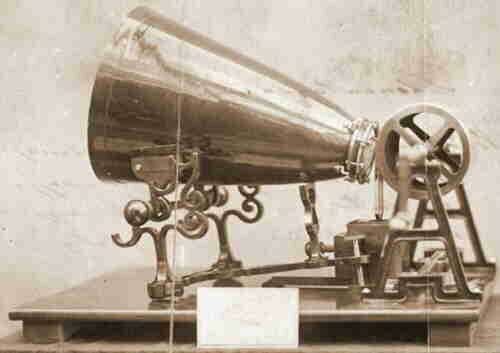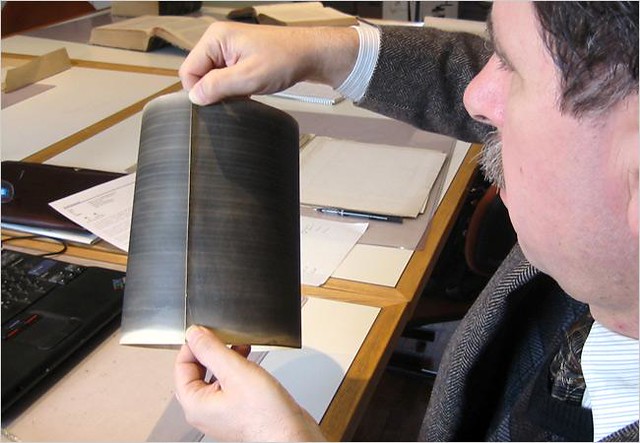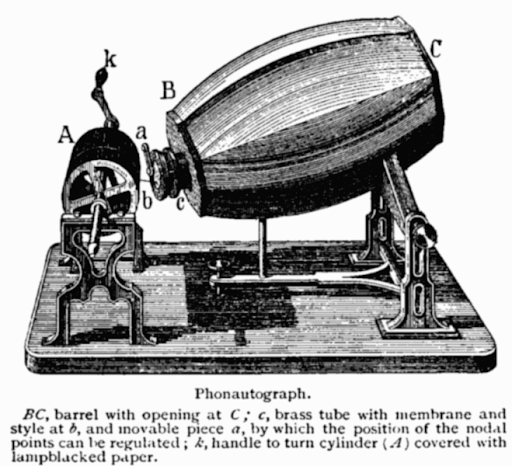The phonautograph, invented in 1857 by French typographer Édouard-Léon Scott de Martinville, represents the earliest known device to capture sound waves in a physical, visual form.
Although it never played back sound, it set the conceptual groundwork for the entire audio recording industry and revolutionized how humans approached the study and preservation of sound.
Scott de Martinville, working as a scientific editor in Paris, was inspired by the anatomy of the human ear. He envisioned a mechanical device that could mimic the ear’s role by transcribing sounds onto a tangible medium much like photography captures images. He described this as “photographing the word” and began experimenting in the early 1850s, aiming to write speech itself.
The phonautograph funneled sound through a horn to a thin, flexible membrane acting as an eardrum. A rigid stylus, a boar’s bristle attached to this membrane vibrated in response to incoming sound waves. As paper or glass coated with soot moved horizontally beneath the stylus, it inscribed wavy lines called phonautograms onto the surface. These tracings visually represented the sound’s frequency and amplitude but were not intended for playback.

Unlike later inventions like Thomas Edison’s phonograph, the phonautograph served as a scientific tool for acoustic research rather than entertainment. It helped experts analyze vowel sounds and pitch, advancing the study of sound’s physical properties. Several devices were sold to institutions including the Smithsonian.
One of the most remarkable phonautograms dates from April 9, 1860, featuring a voice singing the French folk song “Au Clair de la Lune.” Though unplayable at the time, modern digital technology allowed scientists in 2008 to scan and convert this soot tracing into sound, the earliest known intelligible human voice recording, predating Edison by nearly two decades.

Scott’s phonautograph introduced the core principle of converting sound waves into a physical medium of visual patterns, a concept that paved the way for the development of the phonograph, gramophone, and eventually digital recordings. While Edison’s phonograph was the first device to both record and play back sound, the phonautograph remains a pivotal milestone bridging scientific inquiry with auditory art.

For the Ghana DJ Awards and music lovers everywhere, the phonautograph represents humanity’s long-lasting effort to record, keep, and share sound. It paved the way for every artist, DJ, and producer to create and connect with people all over the world.
The phonautograph isn’t just an old invention, it shows how science and creativity come together to move the music world ahead. Its influence still motivates musicians and sound creators to explore new ideas and push the limits of sound technology today.






Comment here